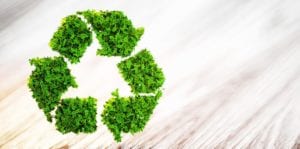Shoes made from ocean plastics, packaging material made from mushrooms and a green partnership between Ford and Heinz to build car parts from tomato fibre.
These are examples of the circular economy in action. The circular economy has been inaccurately referred to as “recycling on steroids”. It was shown to be much more than that in an impactful presentation by United States based supply chain specialist Deborah Dull at the recent SAPICS Conference in Cape Town. She contends that supply chain management and the circular economy can save the planet. In her current role as Principal, Supply Chain Management, at General Electric subsidiary GE Digital, Dull works across the supply chain community to accelerate the transition to a circular economy. Her goal is to progress past a linear “take-make-waste” approach to one in which supply chains around the world is supporting a “make-reuse circular approach to dramatically lengthen the lifecycle of the items around us”. “Circular economy is already well under way around the world and goes beyond sustainability agendas,” Dull informed delegates at the annual SAPICS Conference. “The circular economy builds on the idea of industrial symbiosis where the idea is that a series of factories are set up next to each other; the biproduct or residual product of one factory process is used as a resource by another. Through local collaboration, public and private enterprises buy and sell residual products from one another, both making money and saving the environment.With new Industry 4.0 technologies, the concepts beyond the industrial symbiosis can be stretched across digital supply networks, allowing for materials and byproduct exchanges to happen at scale.” Organisations and governments are investing in these initiatives because of the capabilities of the circular economy, including profits, she said. Challenging the misconception that saving the planet always comes at a cost, Dull reported that the circular economy is on track to add 4.5 trillion dollar to the global economy by 2030 and create hundreds of thousands of new jobs. “I argue that the true focus of circular is first on the ‘economy’ part; on expanding profits,” she stated.Sports brands like Adidas is embracing circular economy principles in its partnership with “Parley for the Oceans”, an environmental organisation that is fighting environmental threats posed by ocean plastic pollution.
“In 2017, Adidas sold one million pairs of its Parley brand shoes, which are made with ocean plastic. In 2018, five million pairs were sold; and Adidas has announced that it will make 11 million pairs in 2019. These are not inexpensive shoes, but they are in demand,” Dull said. Proctor & Gamble is making bottles from recycled plastic and ocean plastic. “As part of their ‘Ambition 2030 Initiative’, they have taken nearly all of their manufacturing facilities past zero waste towards circular models and have saved over USD2 billion.”







